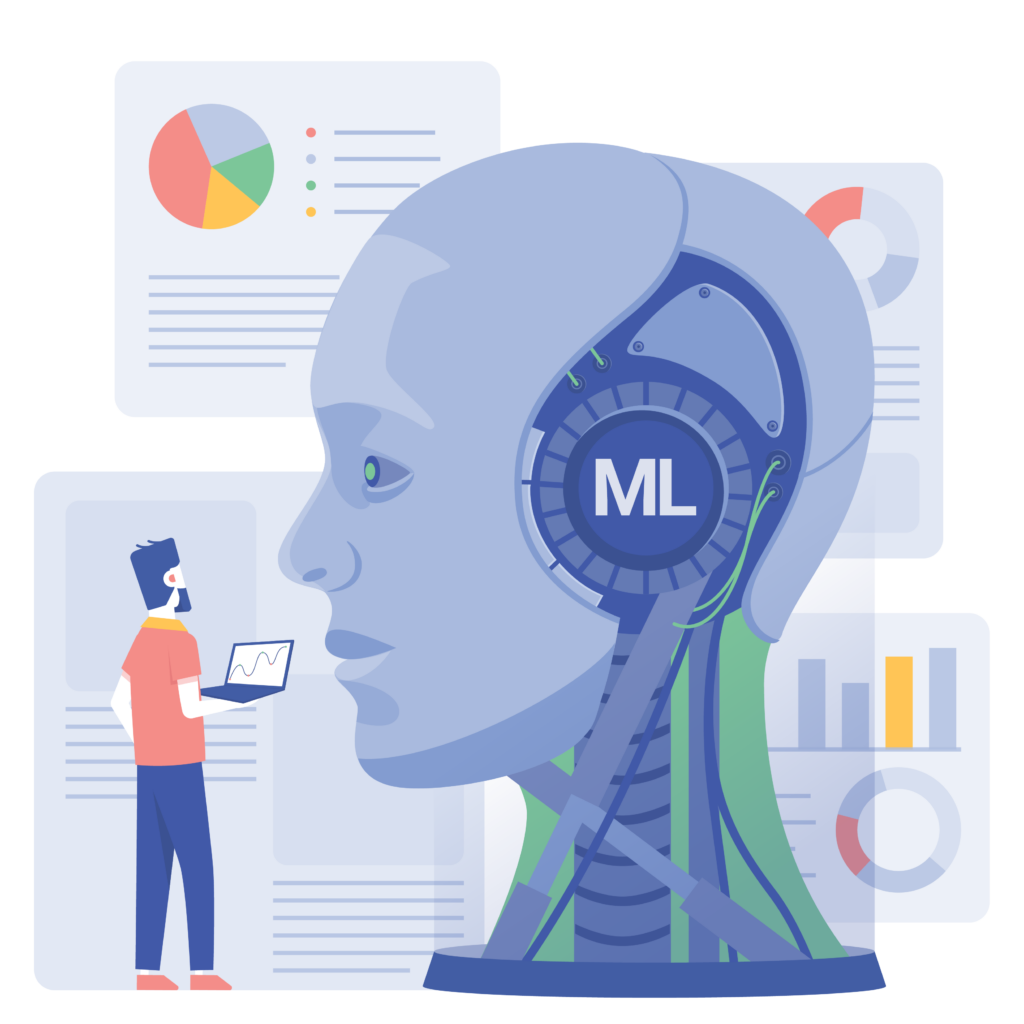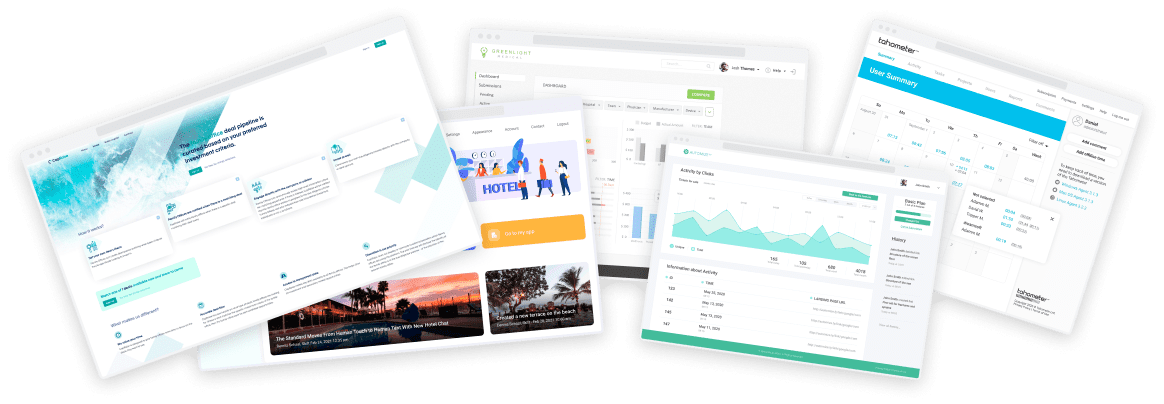The AI world has long been mesmerised by scale. Bigger...
Read MoreMachine Learning
Though often confused with AI, machine learning (ML) is where we currently stand in our quest to achieve actual (or sentient) artificial intelligence. After all, while at the moment, we are not yet able to hold full-blown conversations with our devices, today’s machine learning (ML) algorithms have ushered in a brand new era in automation.
Machine Learning (ML) is an important technology that allows computers to learn from data and make predictions or decisions without being explicitly programmed. ML is becoming increasingly popular as a tool for businesses and organizations of all types to gain insights, automate processes, and improve performance. Machine learning software development is also an emerging field with many opportunities.
The most popular types of ML at the moment include supervised learning, unsupervised learning, and reinforcement learning. Supervised learning is used to predict outcomes based on labeled data, unsupervised learning is used to identify patterns or structure in unlabeled data, and reinforcement learning is used to train models to make decisions in complex, dynamic environments.

How Does Machine Learning Work?
As the name implies, with the help of some very clever algorithms, machine learning allows us to feed data into our machines (known as “training data”) to automatically perform predictions without any explicit programming — as if they’d learnt to do it all by themselves. In this way, we can develop software solutions to scan images for objects and faces, respond to specific voice commands, and recognise other useful patterns.
Supervised Learning
In supervised learning, algorithms make use of both training data and human feedback to understand the relationship between a given set of inputs and outputs. Popular use cases include forecasting sales, generating personalised recommendations, predicting equipment maintenance and allocating human resources.
Clustering
Clustering is an unsupervised machine learning technique that is used to make sense of unstructured data. This is done by grouping data points with similar properties and features together. Clustering may be used to identify fake news and spam, classify network traffic, bring together marketing targets and organise important documents.
Structured Prediction
Structured prediction involves a wide variety of supervised ML techniques that enable developers to predict structured objects (as opposed to scalar discrete or real values). We use structured prediction in a number of exciting fields including natural language processing, computer vision, speech recognition and bioinformatics.
Anomaly Detection
With the help of AD algorithms, we can pinpoint specific outliers with relative automated ease, monitor valuable metrics and single out suspicious activity. These algorithms are employed in fraud detection, sensor data correction, advertising campaign optimisation, seismology and health diagnostics.
Reinforcement Learning
Reinforcement learning is unique in that it may be considered a semi-supervised learning ML model. Like in a game of Pacman, the technique allows software agents to interact with a given environment in order to maximise cumulative rewards. It is seen in a number of areas including robotics, traffic light control and chemistry.
Neural Networks
The current pinnacle of machine learning technology, in artificial neural networks, we base our systems on connected nodes known as “artificial neurons,” and thus strive to mimic the human brain. ANN systems may be employed in everything from facial recognition software to forecasting market movements.
Where Machine Learning Is Used
Data Mining
SEO – Neural Matching
Computer Vision
Search Engine Optimisation
Email Filtering
Pattern recognition
Natural language processing
Is It Time For Machine Learning To Power Your Business?
Which ML Framework Should You Use?
Proprietary Machine Learning Software
IBM Watson Studio
Google Cloud Vertex AI
LIONsolver
Azure Machine Learning
Amazon Machine Learning
NeuroSolutions
Open Source Machine Learning Frameworks
Theano
PyTorch
Apache MXNet
TensorFlow
Case Studies
SPG are proud of the work we do. From SMEs to large corporations looking for web developers in the UK, we are the trusted partners of hundreds of businesses — both UK-wide and internationally — who put their confidence in our experienced programming specialists. If you are interested in some of our past projects, have a look at our featured case studies!
Clients from SMEs to Fortune 500 Companies
When it comes to serving customers, there is never really a silver bullet. Our success is the direct result of working hard to find the right approach for every one of our specific partners.
“At our organization, they’re known for being insanely productive. If we give them an assignment, we know it’ll be completed on our end before we’re even ready to review it. That’s really why we keep coming back year after year."
VP of Engineering, Hospitality Company. Miami, Florida
“They’re technically proficient, delivering eloquent solutions to all of our problems. They’re a team of clever, critical thinkers. I can’t think of anything that I would’ve changed about their service. They were absolutely fantastic."
CEO, Iron.io. Las Vegas, Nevada
"Their team philosophy combines reliable, customized software solutions for everyone and an individual approach to each client with unrivaled offshore value" — read the full review.
Kate Gross, a journalist for fixthephoto.com
“They took a hands-on approach and suggested site improvements, which speaks volumes to their commitment. I would not have a business without the work this company did. We now have hundreds of users, including over 80 paying ones!"
Founder & CEO, Sequitur News LLC. Champaign, Illinois
“This is the best experience I’ve had with an outside vendor. They’re collaborative and insightful, providing insight and expertise to improve the final result. They’re also flexible and timely."
Performance Manager, Nokia. Budapest, Hungary
How Do We work?
Our customer roadmap is as straightforward as it gets:
Get in touch
Arrange a phone call or video chat
Provide requirements
Estimate project
Start development
Are You Ready to Start Your Project?
Get In Touch With SPG Right Now!
Related Blog Posts
The Rise of Code Cleanup Teams After Vibe Coding
Start-ups often thrive on speed. Founders sketch out a product...
Read MoreHow to Survive in the Upcoming AI Era: A Student Guide
On 6 August 2025, Forbes published a piece about some...
Read MoreBest Practices for Using Gemini CLI Effectively in Production Codebases
The command-line interface for Google Gemini brings large language model...
Read More



